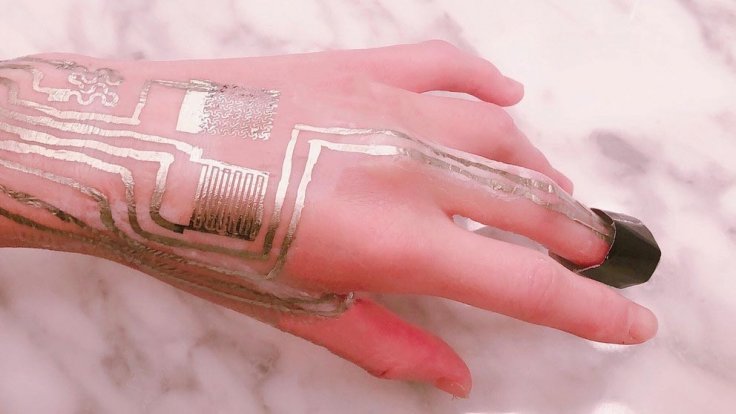The need for constant health monitoring has propelled the development of sensors that can be put on watches, wearable devices and even on thin bendable plastic materials. However, on-body sensors provide far more accurate readings. Realizing the potential, a group of scientists has gone a step further by printing the sensors directly on human skin for precise readings.
The concept of printing sensors on the body isn't new though. But scientists previously had to rely on a sophisticated fabrication process for direct printing on a carrier substrate that could be attached to the skin. But Huanyu "Larry" Cheng, Dorothy Quiggle and their colleagues at the Penn State Department of Engineering Science and Mechanics have come up with a new approach.
How Did They Do It?
Cheng and his colleagues had developed a flexible printed circuit board that could be used in wearable sensors. But printing directly on the skin met with difficulties, especially with the high temperature needed for the bonding process of the sensors. The process, named sintering, needs around 572 degrees Fahrenheit or 300 degrees Celsius for the silver nanoparticles to bond together. But skin cannot withstand such high temperatures.

"The skin surface cannot withstand such a high temperature, obviously. To get around this limitation, we proposed a sintering aid layer – something that would not hurt the skin and could help the material sinter together at a lower temperature," said Cheng, whose study was published in the ACS Applied Materials & Interfaces.
The first process they came up with involved adding silver nanoparticles to the mix that could sinter at a lower temperature of around 212 degrees Fahrenheit or 100 degrees Celsius. That process could be used for printing sensors on paper and clothes but 100 degrees Celsius can still harm the skin severely. Thus, altering the formula was needed. The team looked at an easily available material, polyvinyl alcohol paste that is used in peelable face musk and calcium carbonate, that makes the eggshells.
By combining the new materials with the existing formula, the team found that it could sinter at room temperature. Furthermore, the layer could be bent, folded without losing the electromechanical capabilities. After printing the sensors, researchers used a hairdryer (air blower) set at cool to remove the excess water that was used as an ink solvent. "The outcome is profound. We don't need to rely on heat to sinter," Cheng said.

What Can It Be Used For?
The printable sensors work like typical wearable devices that can continuously monitor body temperature, blood oxygen level and heart rate. The device is also capable of wireless transmission of the signals for monitoring of the progress.
According to Cheng, printed sensors are environmentally friendly. The sensors can work flawlessly in lukewarm or room-temperature water. It can be easily removed using hot water. "It could be recycled since removal doesn't damage the device. And, importantly, removal doesn't damage the skin, either. That's especially important for people with sensitive skin, like the elderly and babies," Cheng said, adding that the device can be used without being an extra burden.
Cheng and his colleagues believe the technology can be altered to suit specific needs such as a network of on-body sensors to monitor symptoms of COVID-19.









